10 visionary leaders on the state of social impact in (post-pandemic) 2030
Why It Matters
The last nine months have seen Canada’s social impact sector go into survival mode. But survival alone is not sustainable. Huge challenges await Canada in the post-pandemic world, and vision, courage, and resourcefulness are required to remain relevant after the virus is defeated.

Mainstream impact investing, achieving the United Nations’ Sustainable Development Goals, collaborating with companies — Canadian social impact leaders had a variety of ideas back in January about the state of the sector in 2030.
Then the COVID-19 pandemic began. An uprising against anti-Black and anti-Indigenous racism surged to prominence around the globe. The WE Charity controversy threw the sector into a transparency crisis. Philanthropy became more trust-based to respond to organizations’ emerging and critical needs. Canadians are struggling to pay their bills and find joy amid one of the most tumultuous periods in recent history. The social impact sector is facing unprecedented financial and ethical challenges.
Predicting what will happen tomorrow, let alone the next 10 years, is exceedingly difficult at the moment. Still, recent events still have not robbed the social impact sector of its ambition or ingenuity. Future of Good spoke with 10 leaders, many of whom are speaking on these topics at the Future of Good Summit later this month, about their predictions — and the stakes — for the sector in 2030:
Gladys Ahovi, executive director, Canadian Council for Youth Prosperity

In the workforce development world, where Gladys Ahovi works, social impact isn’t a general practice. By 2030, she hopes that changes. “I think the pandemic is forcing a lot of people to think about community impact and social impact very differently than they have traditionally,” she says. Ahovi believes philanthropic organizations will start contributing to more workforce development by funding employment support programs and organizations. Banks such as RBC are already funding these types of initiatives, Ahovi says. Meanwhile, the movement against racism throughout this year called out the systemic lack of support for Black and Indigenous workers, a move Ahovi says has resulted in additional funding for employment support for marginalized communities. “I think we will continue to see that level of public accountability, not only in terms of addressing incidents of wrongdoing, but addressing the lack of investment, [and] undo harm that’s been caused for many, many years,” she says.
Andrew Chunilall, CEO, Community Foundations of Canada
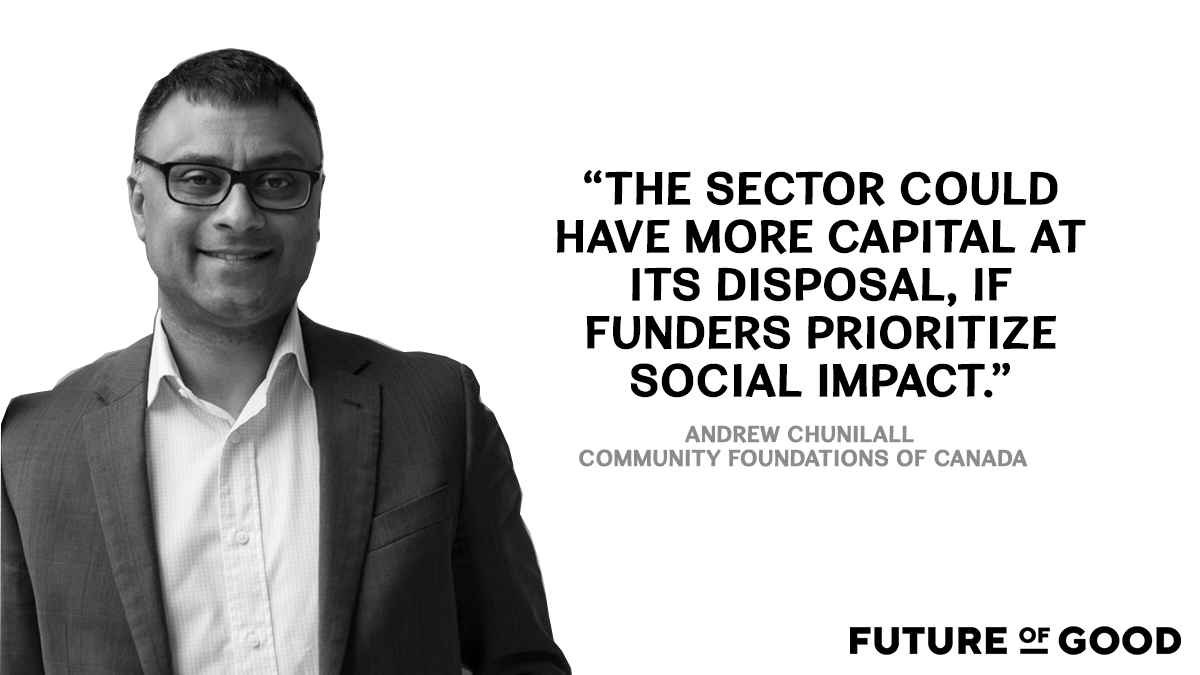
Despite the turmoil of the last year, Andrew Chunilall says the social impact sector has a lot of strengths right now: tremendous drive, good talent, a desire to bring together social impact and capitalistic virtues. However, it lacks capital. “I find that the sector is deeply undercapitalized right now,” he says. “If we get this right in the next 10 years, we’ll have an appropriately capitalized social impact space such that it becomes a very robust part of our economy.” This sector, in 2030, would not only deliver social good, but create jobs and work on critical issues like affordable housing and climate change. How will this happen? Philanthropic foundations need to be prepared to invest more of their significant assets in social impact. “We are the holders of an extensive amount of capital that continues to grow,” Chunilall says. “And we have to use that social capital in a way that advances a robust recovery and then positions the social impact sector in a privileged space within that.”
Panthea Lee, co-founder and executive director of Reboot
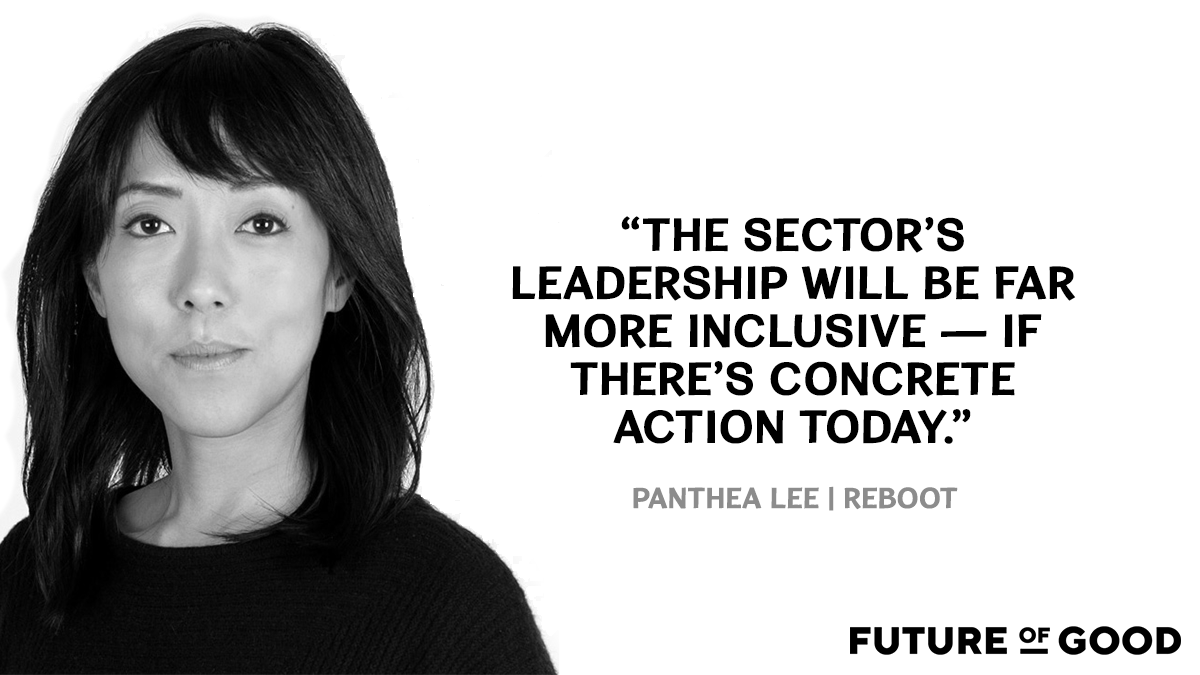
Reboot focuses on social justice at the complicated intersection of governments, international agencies, community leaders, movements, artists, and activists. But implementing structural change in 2030 will require the sector to look at itself. Over the past year, Panthea Lee says she’s been “cautiously encouraged and optimistic” about how the social impact sector is considering questions of its privilege, power, and racism. This is thanks to COVID-19, but also the broader Movement for Black Lives and ongoing protests against systemic racism. Lee hopes that by 2030 those discussions will translate into concrete action around how leaders in the sector are chosen. That said, she doesn’t trust the efforts she’s seen so far. “I see a lot of good intentions. I see a lot of well-intentioned people,” she says. “But I don’t see a lot of fundamentally questioning the centrality of these institutions. I don’t see fundamental questioning of the power of these institutions.”
Alex Ryan, senior vice president of partner solutions, MaRS Discovery District

What will social impact look like in 2030? “I hope it will be mainstream,” says Alex Ryan. “It won’t be this thing that happens on the margins, but it’s just integrated into the water supply.” A glimpse of that can already be seen in MaRS’s work on corporate social responsibility projects, he says, where major companies are able to create social and environmental benefits to communities. The Toronto-based hub is also trying to make Canada a world leader in the innovation economy and help drive a transition to what Ryan calls a “flourishing society” — a future where everyone’s full potential is met and decisions made in the present are accountable to future generations. Part of that will come with integrating the public, private, and philanthropic sectors, Ryan adds. “The kind of transition we’re facing over the next decade. No one sector or institution can do it itself,” he says.”
Diane Roussin, project director, Winnipeg Boldness Project
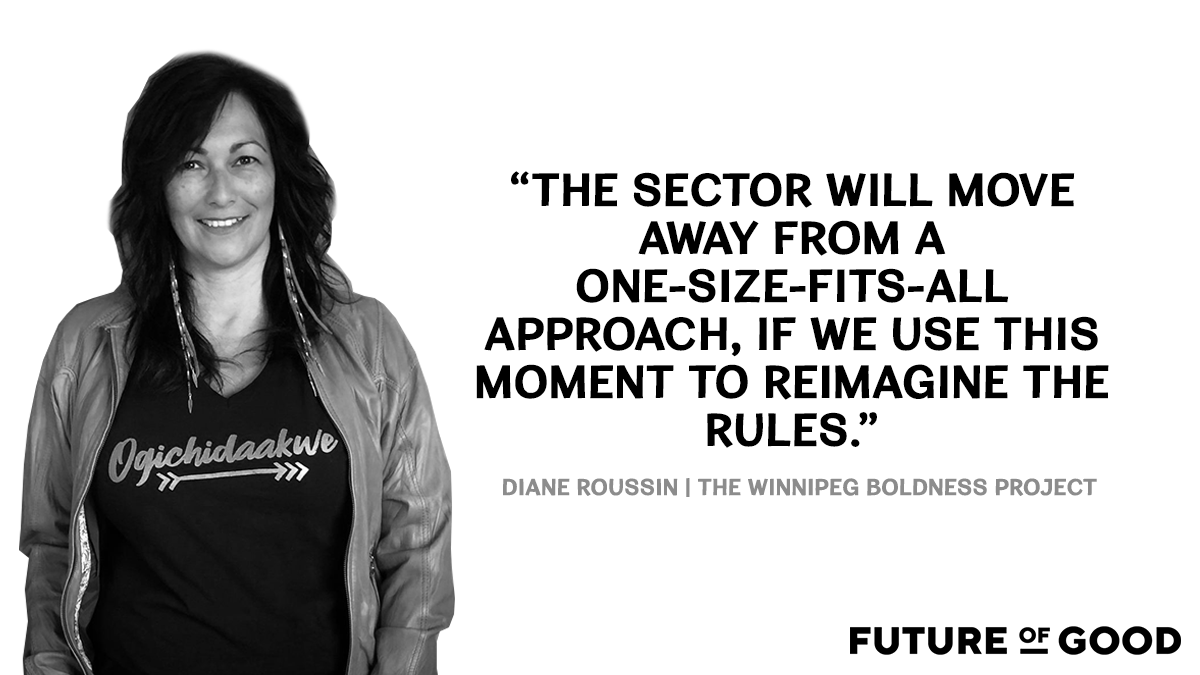
Diane Roussin runs the Winnipeg Boldness project, a social innovation and research organization making life better for children and families in the Point Douglas area in Winnipeg, Manitoba. She’s seen first-hand how the rigid structures and ‘rules’ in the social services sector don’t work, and says by 2030, the sector will be much more flexible in how it approaches social problems. “The families we hear from are asking for customizability” of the financial and social support they receive, she says. “What works for one family might not work for another family.” She also points to the example of the child welfare system, where children are often apprehended from their families for reasons having to do with poverty rather than abuse. Roussin questions whether the resources used to keep a child in care could, in many cases, be directed to support for the family instead. She says by 2030, “we’ll look back and say, ‘What were we thinking’” using the same approach and system with every family in need of support? Another way to conceptualize this shift, Roussin says, is from “triangular” thinking — hierarchical, rules-based, rigid — to “circular thinking,” which is more flexible and fluid.
Jill Schnarr, Chief Social Innovation Officer, TELUS
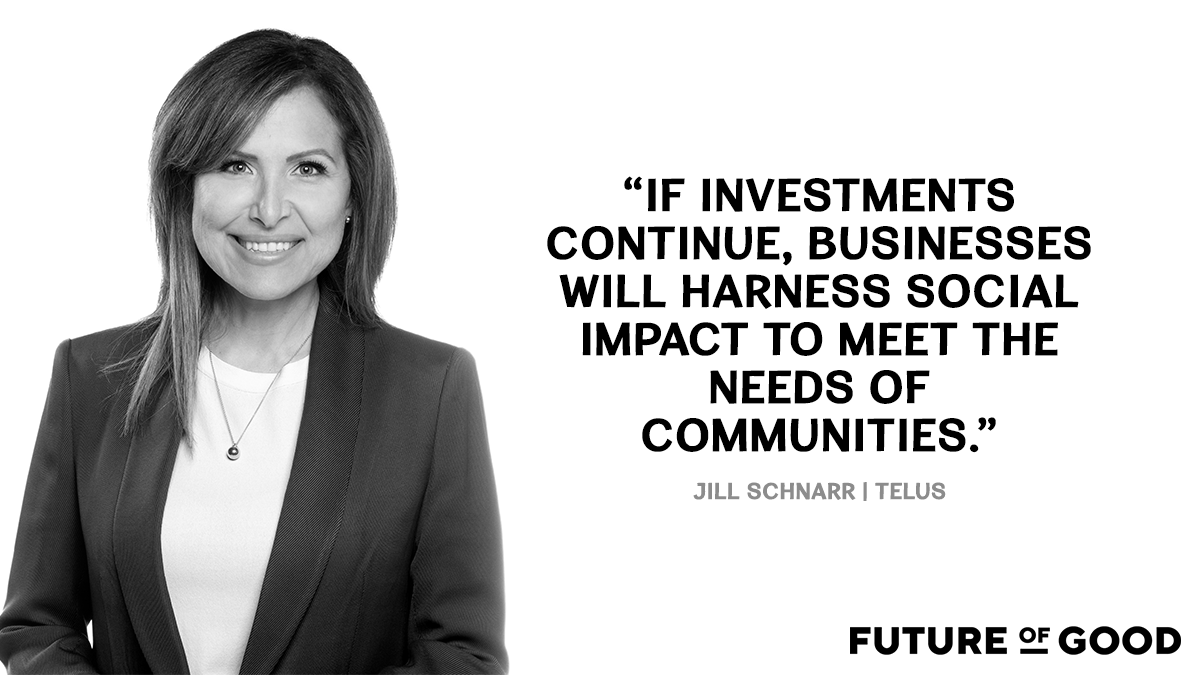
As a major corporation, TELUS is keen on profit. But Jill Schnarr says it is also focused on building social purpose opportunities. In an email to Future of Good, she says the social impact sector and business aren’t mutually exclusive. Social impact businesses can produce food sustainably or reduce humanity’s environmental footprint while also generating a profit. “Creating socially responsible companies and products should be the goal of all businesses,” Schnarr writes. In the next 10 years, she believes social innovation won’t simply be an offshoot of innovation — they’ll be seen as one and the same, with businesses routinely getting involved in social impact. TELUS intends to be part of the race, too. “We are addressing social issues to drive improved social, digital, and environmental outcomes, through investments that bring socially innovative products and services to market,” Schnarr says.
Sarah Schulman, lead partner, InWithForward and co-author of The Trampoline Effect: Redesigning Our Social Safety Nets
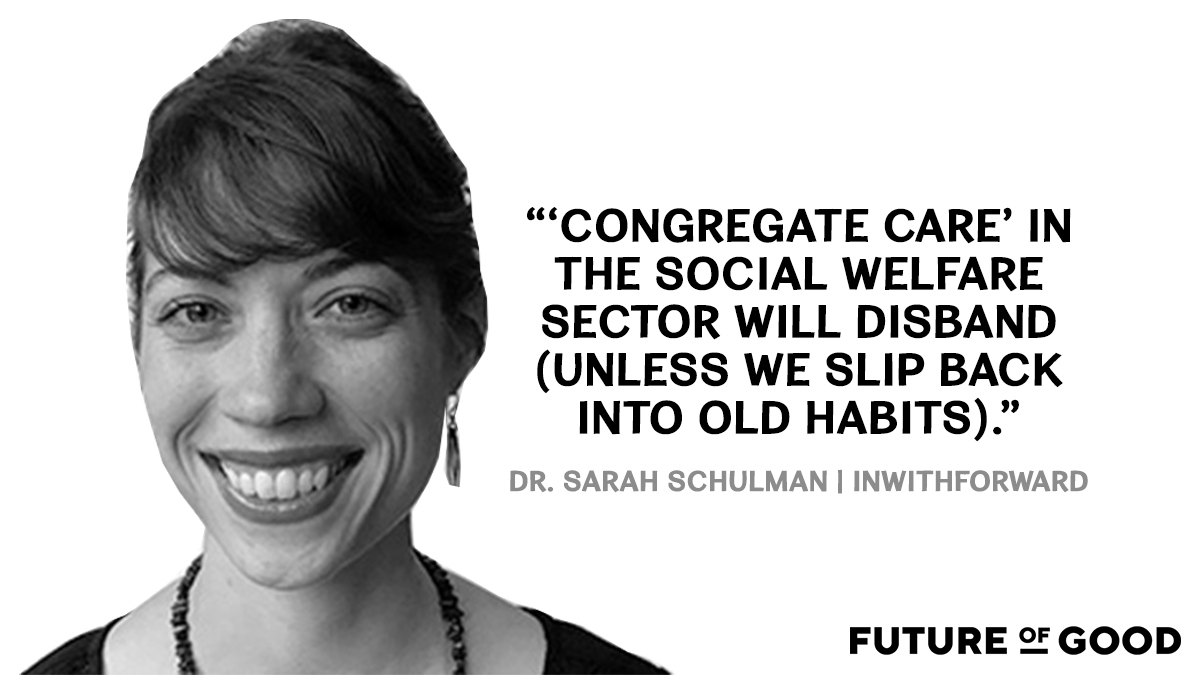
The supervised, residential congregate care environments of homeless shelters, nursing homes, and long-term care facilities are all commonplace in Canada’s social welfare system. Sarah Schulman hopes, by 2030, they are on their way to obsolescence. “We put older people together, we put homeless people together, we put disabled people together, and we create a lot of stigma and shame,” she says. Instead, Schulman hopes the social welfare sector focuses on creating connection and belonging among users. “How do we enable people to learn, to grow, to develop, rather than just be seen as people who need help?” she says. Changing the social welfare sector will require it to move away from its historical values of safety, risk-aversion, and clients’ compliance to organizations’ rules, Schulman says, and that may be difficult. “Those things are in people’s bones,” she says.
Adam Spence, director, Social Venture Connexion (SVX)
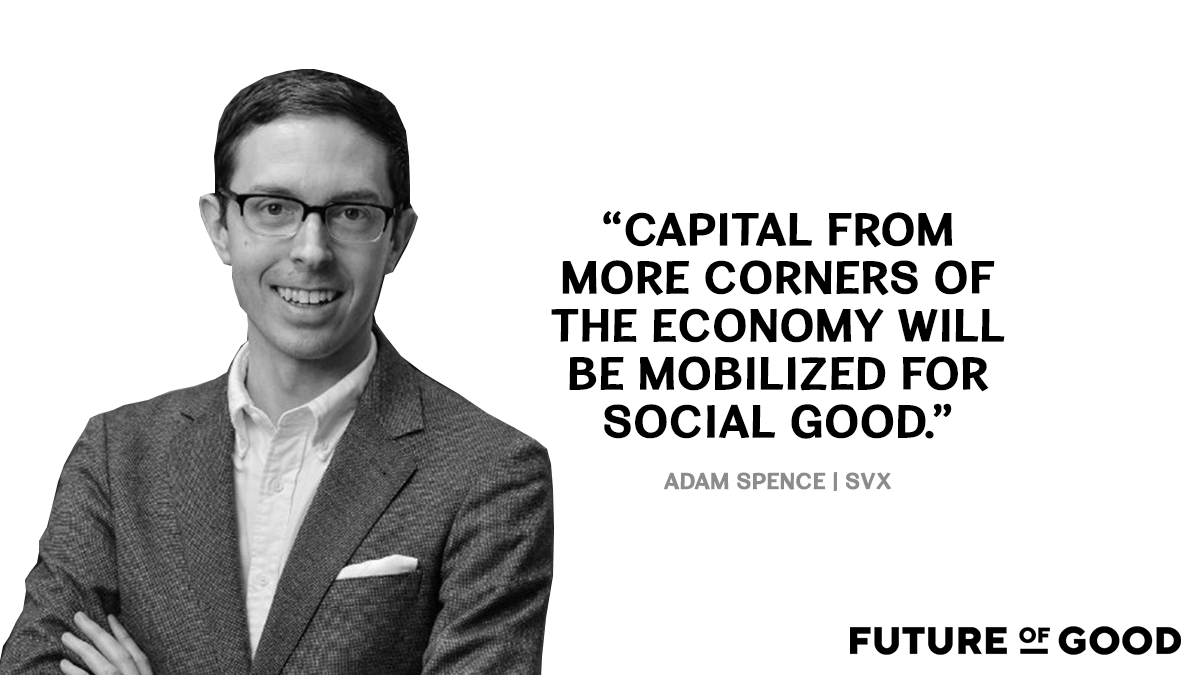
“The period between today and 2030 will be a transformative, defining decade in the pursuit of social, economic, and environmental justice by the social impact sector,” says Adam Spence. One huge area of opportunity? Rerouting existing capital for social progress, he says. “Our individual and collective investment assets will be mobilized to achieve the change we need to seek, with capital from small retirement savings accounts to massive pension funds. It will be hard fought, and it will require an unprecedented collective effort. But we can and we must achieve success in tackling the most pressing challenges of the present and of the next ten years at a local, national and global level, from precarious work to gender and racial inequality to climate change.”
Laura Tribe, executive director, OpenMedia
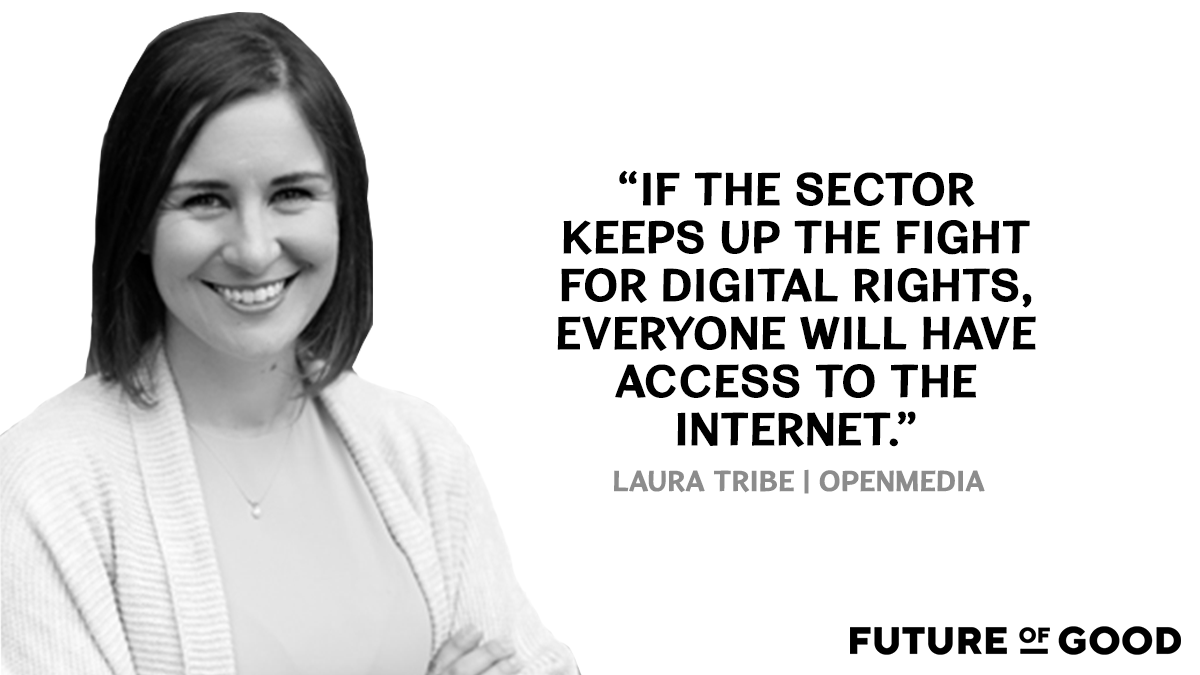
At OpenMedia, Laura Tribe advocates for a free, fair, and open internet. Having all Canadians hooked up to affordable high-speed broadband would be a dream by 2030. What she’s also looking for, however, is a future where Canadians of all backgrounds can more easily advocate for themselves in political discussions using the internet. This is especially true for Canadians with poor or unreliable access. “The reason they’re not included in the discussions is that they don’t have the connectivity,” she says. “It’s like a ‘chicken-or-egg’ situation.” Tribe says the social impact sector as a whole has done a lot to digitize over the past decade and extend its reach. The past nine months is also forcing the sector to accelerate the pace of change even further. Watching the hardships of the social impact sector during the COVID-19 pandemic has been tough, Tribe says, and she hopes it spurs renewed attention to the sector’s vulnerabilities. “It’s been amazing watching the creativity that has come from the constraints of 2020, but I hope that over the next decade, there’s a lot of recognition and investment in the sector to ensure that it is as robust and resilient as possible,” she says.
Bianca Wylie, senior fellow at the Centre for International Governance Innovation

Bianca Wylie believes the best-case scenario for the social impact world in 2030 is one where it steps back and stops “patching around democracy.” While she doesn’t doubt the important work social impact sector professionals perform, she believes governments should step in over the next decade and take increased responsibility for the sector’s most vital roles, including community support services, tackling hunger, and addressing human rights. Why? Put simply, it is more democratic. “With the government, there is power that we as people have if we want to hold governments accountable,” she says. Ultimately, she believes social impact organizations should really be thinking about how to put themselves out of business by 2030. The sector needs to ask itself some tough questions about its involvement in the status quo, Wylie says, and how it can mitigate its own necessity. “I don’t think this sector should be seeking to grow,” she says. “It should be seeking to shrink.”
For more on the future of social impact work, register for the Future of Good Summit here.
